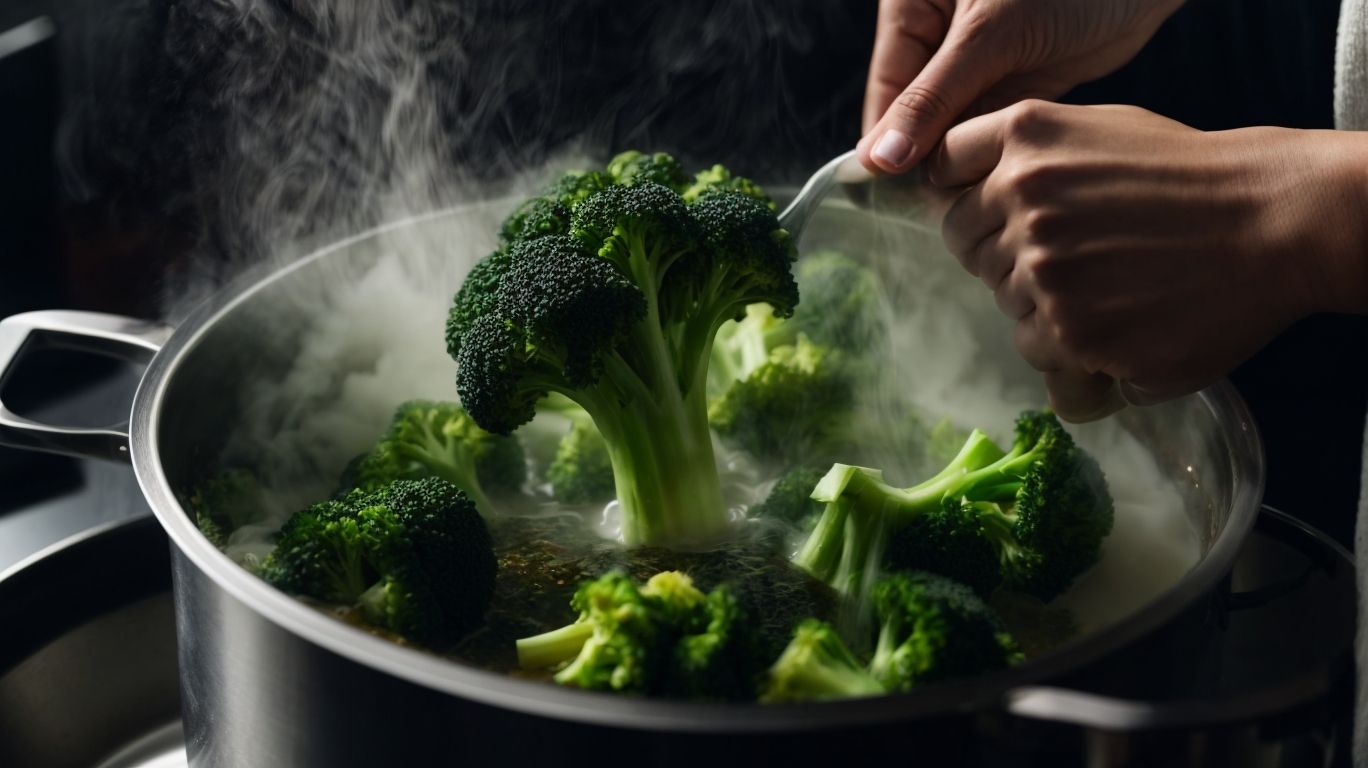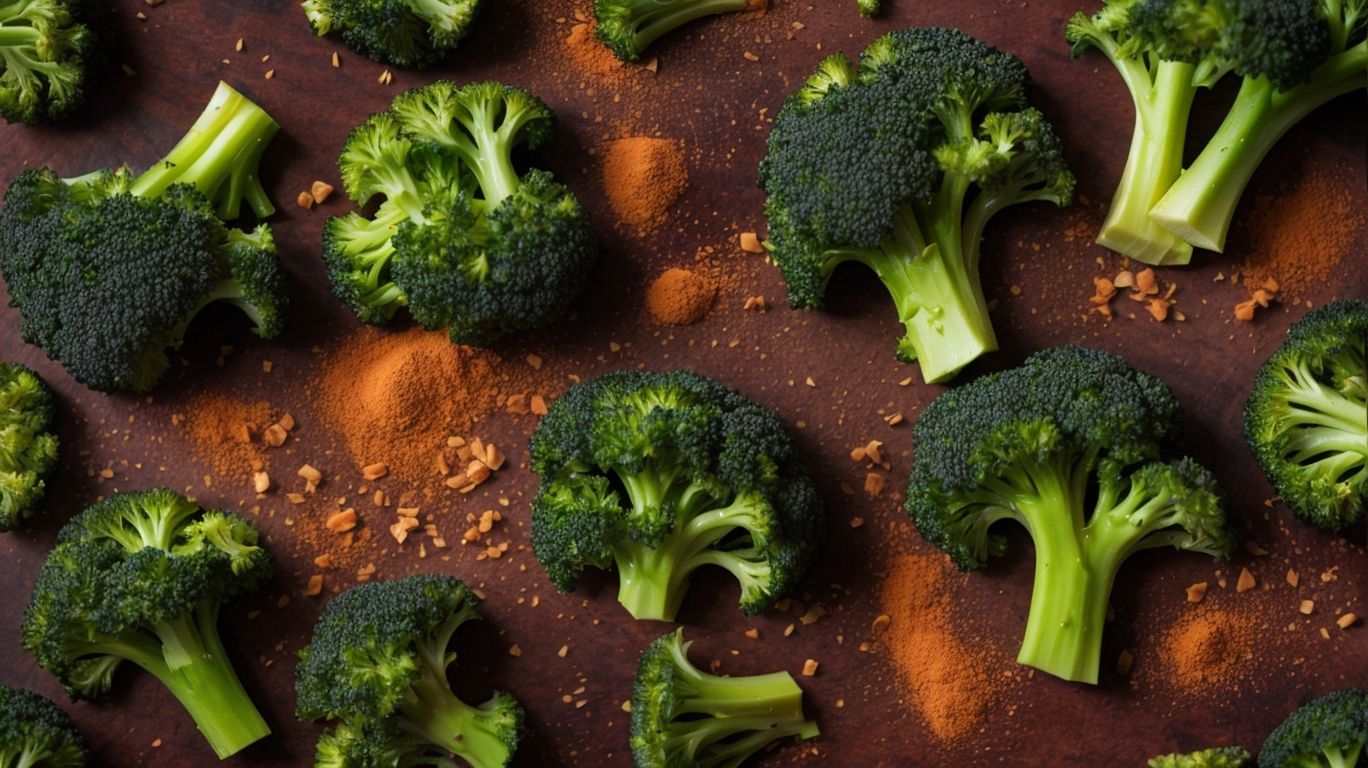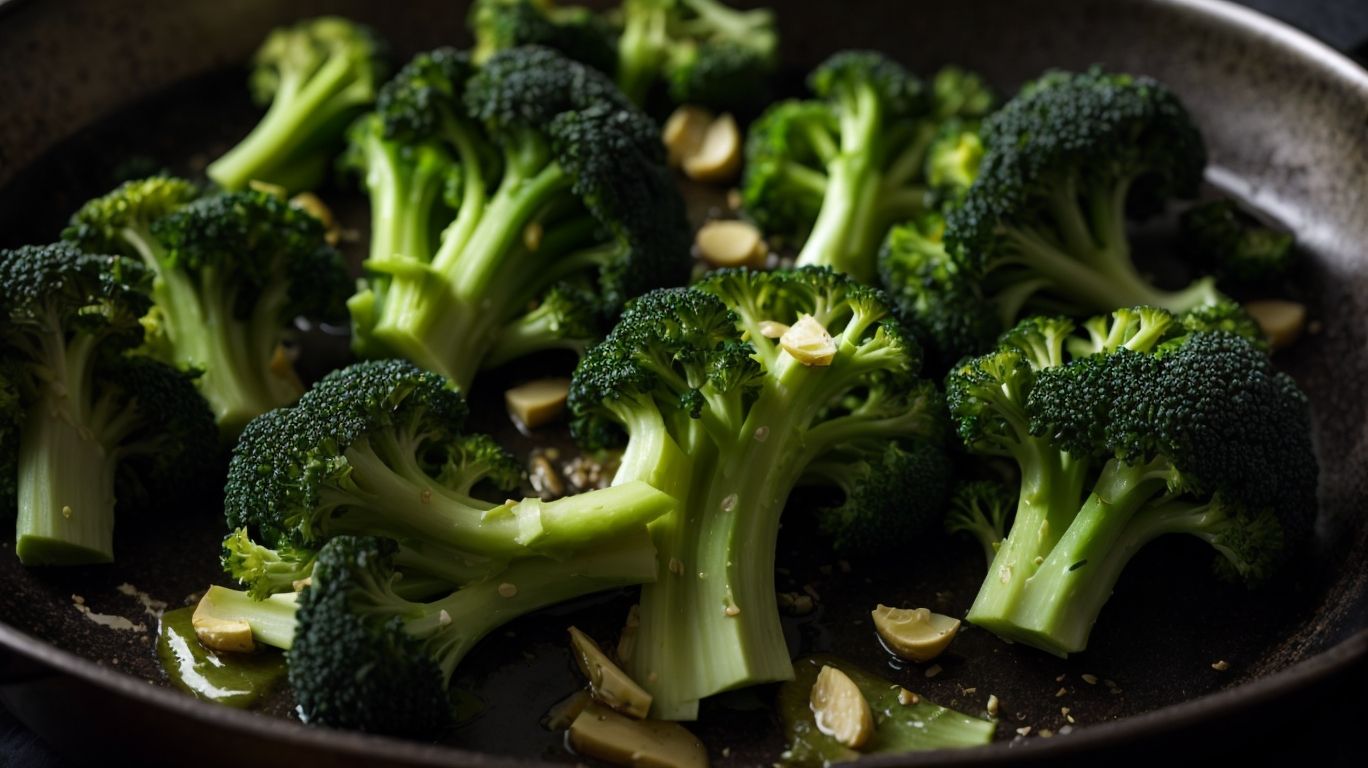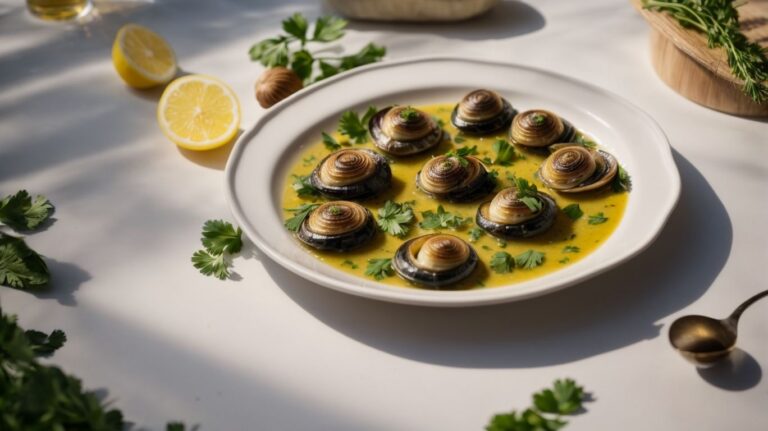How to Cook Broccoli After Blanching?
Are you looking to elevate your broccoli game in the kitchen?
In this article, we will delve into the art of blanching broccoli – a crucial cooking technique that helps retain the vibrant color and crisp texture of this nutritious vegetable.
We will also explore various methods for cooking broccoli post-blanching, including steaming, sautéing, roasting, and stir-frying.
Discover expert tips on how to perfectly cook broccoli after blanching, ensuring a delicious and flavorful dish every time. Let’s get cooking!
Key Takeaways:
What is Blanching?

Credits: Poormet.Com – Kevin Nguyen
Blanching is a cooking technique that involves briefly immersing vegetables such as broccoli in boiling water, then rapidly cooling them in ice water.
This process helps to retain the vibrant color, nutrients, and crisp texture of vegetables. By rapidly halting the cooking process after blanching, it also helps to maintain the vegetables’ firmness, making them ideal for use in salads, stir-fries, or as side dishes. Common vegetables that are often blanched include green beans, carrots, asparagus, and spinach. Blanching is also used before freezing vegetables to preserve them for future use without compromising their quality. The quick cooking method of blanching proves to be a versatile and essential technique in culinary preparations.
Why is Blanching Important for Cooking Broccoli?
Blanching is crucial for cooking broccoli as it helps preserve the vibrant green color of the florets while enhancing their flavor and texture.
When you blanch broccoli, you briefly immerse it in boiling water, which not only sets the green color but also deactivates enzymes that can cause loss of color, flavor, and nutrients over time. This simple step helps the broccoli retain its freshness and crispness while mellowing its bitterness, making it more appealing to the palate. By blanching, you can also shorten the final cooking time, ensuring a perfect balance between a soft bite and that appetizing, vibrant green hue.
How to Blanch Broccoli?
To blanch broccoli, start by preparing the florets and then submerging them in boiling water for a few minutes before transferring them to an ice water bath.
After briefly boiling the broccoli florets, the next crucial step is to cool them down rapidly to halt the cooking process. This is where the ice water bath comes into play, as it helps in preserving the vibrant green color and crisp texture of the broccoli.
Plunge the blanched florets into a bowl of ice water for about 2-3 minutes, ensuring that they are fully immersed. The rapid cooling not only stops the cooking but also helps in retaining the nutrients within the broccoli.
Once adequately cooled, remove the broccoli from the ice water bath and pat them dry using a clean kitchen towel or paper towels. Your blanched broccoli is now ready to be used in salads, stir-fries, or any other culinary creations of your choice!
Preparing the Broccoli
Before blanching, ensure to cut the broccoli into florets and trim any tough stems to ensure even cooking and consistent texture.
When cutting the broccoli into florets, make sure they are of similar size to promote even blanching. This step is crucial as different-sized florets may result in uneven cooking, leaving some pieces too crunchy and others mushy.
Removing the tough stems not only improves the visual appeal of the dish but also ensures a more pleasant eating experience by eliminating any potential chewiness that can be off-putting.
Boiling Water
Boil a pot of water suitable for blanching broccoli, ensuring it is at a rolling boil before adding the prepared broccoli florets.
To achieve the perfect blanched broccoli, start by filling a pot with an ample amount of water and bringing it to a vigorous boil. This high temperature is crucial as it quickly cooks the broccoli while maintaining its vibrant color and crisp texture. Remember, blanching is a rapid cooking technique, so having the water at a rolling boil ensures that the broccoli cooks evenly. Once the water reaches the desired boil, gently drop in the broccoli florets and watch them transform into a lovely bright green hue.
Blanching the Broccoli
Once the broccoli florets are blanched in boiling water for the required time, immediately transfer them to an ice water bath to halt the cooking process.
Plunging the blanched broccoli into the ice water shock not only stops the cooking but also helps preserve its vibrant green color and crispness.
The rapid cooling in the ice water ensures that the broccoli retains its nutrients and locks in the desired texture.
After a few minutes in the ice water bath, drain the broccoli well before using it in your recipes to prevent excess water from diluting flavors.
How to Cook Broccoli After Blanching?
After blanching broccoli, there are various cooking methods you can choose from, including steaming, sautéing, roasting, and stir-frying.
Steaming broccoli is a gentle cooking technique that helps retain its vibrant color and nutrients. Simply place the broccoli in a steamer basket over boiling water and cover, letting it cook until tender.
- Sautéing involves quickly cooking broccoli in a pan with some oil over medium-high heat. Toss the blanched broccoli in the pan until it’s slightly charred and tender, adding seasonings like garlic or lemon zest for extra flavor.
- Roasting broccoli enhances its natural sweetness and creates a crispy texture. Spread the blanched broccoli on a baking sheet, drizzle with olive oil, sprinkle salt and pepper, and roast in a preheated oven until caramelized.
Steaming Broccoli
Steaming broccoli is a healthy and simple way to cook the blanched florets while retaining their natural flavor and nutrients.
After blanching the broccoli to lock in its vibrant color and neutralize any bitterness, steaming becomes the ideal method to ensure a perfectly cooked vegetable without compromising its nutritional value. Steaming allows the broccoli to retain more water-soluble vitamins that might otherwise be lost through boiling, making it a popular choice for those looking to max out on nutrients.
Sautéing Broccoli
Sautéing blanched broccoli in a flavorful sauce can elevate its taste, making it a delicious and quick side dish.
Once you have your blanched broccoli ready, heat a skillet over medium heat and add a drizzle of olive oil. Toss in the broccoli and stir-fry for a couple of minutes until it starts to brown slightly. This is the perfect time to add your chosen sauce – whether it’s a garlic butter sauce, a soy ginger sauce, or a lemon herb vinaigrette. Let the sauce coat the broccoli evenly, infusing it with extra flavor.
Roasting Broccoli
Roasting broccoli after blanching can bring out its natural sweetness and create a crispy texture that complements various dishes.
Once the broccoli has been blanched to slightly soften it, the next step is crucial in enhancing its flavors. Preheat the oven to a high temperature to ensure the broccoli caramelizes perfectly during roasting. Spread the blanched broccoli florets on a baking sheet in a single layer, making sure they are not crowded to allow proper browning.
Drizzle olive oil over the broccoli pieces, ensuring each floret gets coated evenly. Season with salt, pepper, and any desired herbs or spices to elevate the taste profile. Toss the broccoli gently to make sure every piece is seasoned. Roast in the oven until the edges turn golden brown and slightly crispy.
Stir-frying Broccoli
Stir-frying leftover blanched broccoli with other vegetables and proteins can result in a quick and flavorful stir-fry dish.
When stir-frying leftovers like broccoli, it’s essential to have all your ingredients prepared and ready to go before you start cooking. Begin by heating a wok or a large skillet over high heat. Add a splash of oil and wait until it’s shimmering hot.
Next, toss in your aromatics like garlic, ginger, and onions to infuse the oil with flavor. Then, add in your broccoli and other vegetables, making sure to stir constantly to avoid any burning.
To add depth to the dish, consider incorporating a flavorful sauce like a combination of soy sauce, oyster sauce, and a touch of sesame oil.
Tips for Cooking Broccoli After Blanching
When cooking broccoli after blanching, remember not to overcook it, season it well, and experiment with various ingredients for added flavor.
One of the best tips for cooking broccoli post-blanching is to sauté it in a little olive oil with garlic and red pepper flakes for a flavorful kick. This method adds a delicious depth of flavor to the broccoli while retaining its crunchiness.
Another variation you can try is roasting the broccoli with a drizzle of balsamic glaze and sprinkling of Parmesan cheese for a tangy and savory twist. This technique enhances the natural sweetness of the broccoli, making it a crowd-pleaser.
Don’t Overcook the Broccoli
To maintain the optimal texture of blanched broccoli, avoid overcooking it during the subsequent cooking methods to preserve its crunchiness.
Broccoli, a beloved cruciferous vegetable, brings a delightful crunch to any dish when cooked just right. Overcooking broccoli can lead to a mushy, unappetizing texture, diminishing its overall appeal. When blanching broccoli, it is crucial to pay attention to the recommended cooking times, usually around 2-3 minutes, before promptly transferring it to an ice bath to halt the cooking process. Continuing to cook the broccoli for an extended period can result in loss of nutrients and flavor, leaving you with a limp and less vibrant vegetable.
Season the Broccoli
Seasoning blanched broccoli with herbs, spices, or condiments can enhance its flavor profile and make it more enticing to the palate.
Regarding herbs for broccoli, fresh basil brings a fragrant and slightly sweet note to the dish, while thyme adds an earthy undertone. For those who enjoy a kick of spice, a sprinkle of red pepper flakes or a dash of paprika can elevate the broccoli’s taste to new heights. Condiments like a drizzle of balsamic glaze or a squeeze of lemon juice can add a tangy brightness to the vegetable. Experimenting with different seasoning combinations can transform simple broccoli into a culinary delight.
Add Other Ingredients for Flavor
Incorporating sauces, cheeses, or complementary vegetables with blanched broccoli can introduce new flavors and textures to the dish.
For a creamy and indulgent twist, consider tossing the blanched broccoli with a rich cheese sauce made from a blend of cheddar and parmesan. The gooey melted cheese adds a comforting element to the dish, making it a satisfying side or even a main course. You can also opt for a zesty lemon garlic sauce to infuse a bright and citrusy flavor to the broccoli. The tanginess of the lemon combined with the savory garlic creates a refreshing contrast to the vegetable’s earthy taste.
Conclusion

Credits: Poormet.Com – Joe Thompson
Mastering the art of blanching broccoli opens up a world of culinary possibilities, allowing you to create vibrant and flavorful dishes that celebrate the natural essence of this bright green vegetable.
By blanching broccoli, you are able to not only retain its vibrant color but also maintain its crisp texture, making it a versatile ingredient that can be used in salads, stir-fries, soups, and casseroles. The process of blanching involves briefly boiling the broccoli florets and then quickly chilling them in ice water, which helps lock in the vegetable’s nutrients and flavors. This cooking technique is particularly essential in preparing dishes where the broccoli needs to be cooked to perfection without turning mushy.




